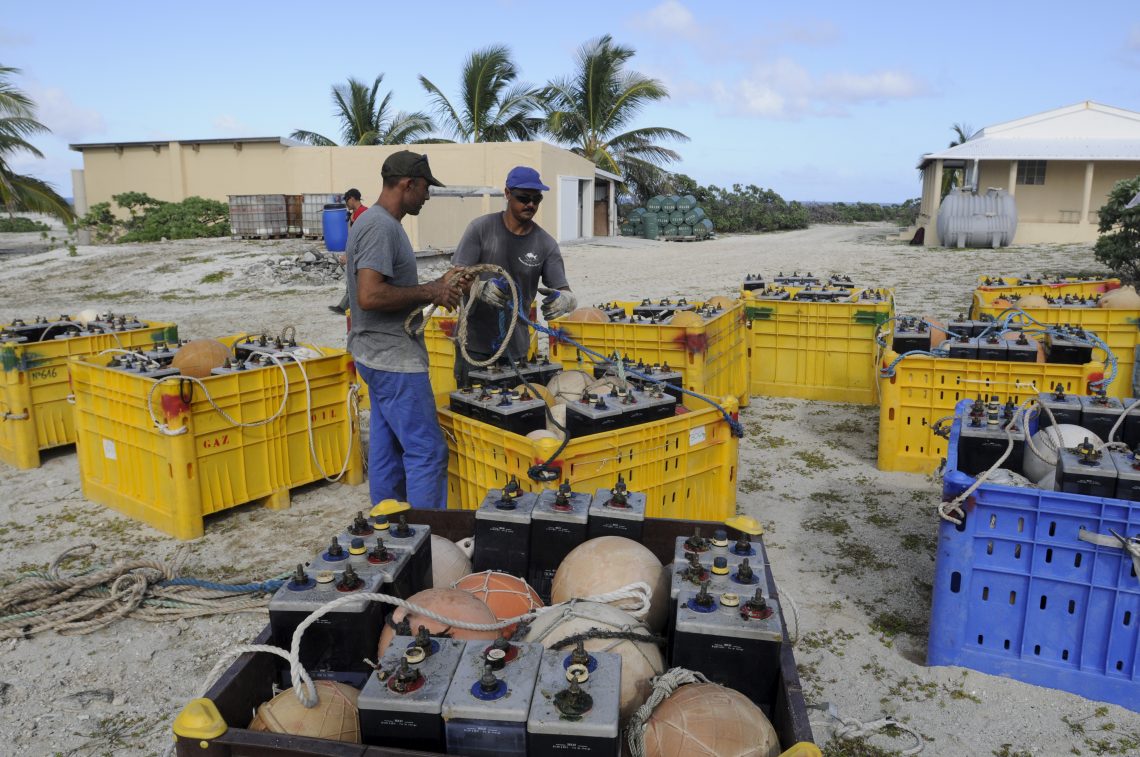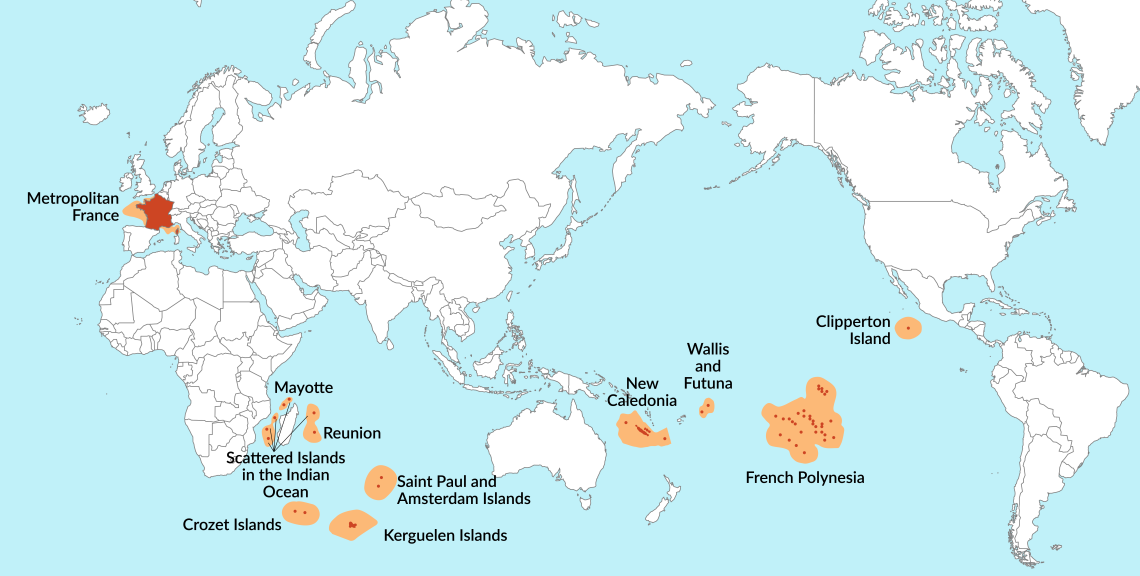France’s strategy in the Indo-Pacific
France has long been aware of the geopolitical importance of the Indo-Pacific, but in recent years Paris has taken new steps to play a key role in the region.

In a nutshell
- France is ramping up its Indo-Pacific engagement
- It seeks close collaboration with countries in the region
- Paris could push for a harmonized EU strategy
With Chinese leadership growing ever more assertive in its ambitions and aggressive in its behavior, the Indo-Pacific region has become the main geographical framework of new security strategies – especially given current concerns over the United States’ willingness to support local allies. This gradual shift in focus from the Atlantic to the Indo-Pacific could place Beijing at the center of a new international system.
Formulating a French strategy for the Indo-Pacific
By the end of the Cold War, France was already aware of these challenges, even if it was not until the end of the 2010s that an Indo-Pacific strategy was formalized. Its approach revolves around how best to counter the maneuvers of the Chinese party-state.
In 1994, a white paper underlined the development of Chinese naval capabilities and the growing importance of Asian maritime routes for French foreign trade. The conclusion was that Paris needed to reassess its diplomatic and strategic posture in the region accordingly. But, paradoxically, France instead partially disengaged from the region.
While French territories in the Indo-Pacific are mostly stable, their environment is not.
The context changed considerably in 2008 when the first official white paper on defense and national security was published. By then, the U. S. had begun to worry about Beijing’s “peaceful rise” and “string of pearls” strategy, and adapted its posture to answer the “Chinese threat.” French leadership also began to be concerned about the effects of a possible major conflict in Asia on maritime communication routes and globalized supply chains.
The 2017 Strategic Defense and National Security Review marked a decisive turning point. The publication states that major changes on the international scene are occurring in the Indo-Pacific, and that a strengthening of the French presence in this region is essential.
In 2018, during speeches delivered in Australia and New Caledonia, President Emmanuel Macron outlined the French strategy in the Indo-Pacific. Faced with the challenges posed by China, France should create an Indo-Pacific axis with Australia, India and Japan (and any other country with converging interests) as partners.
Several official strategies focused on the Indo-Pacific were subsequently published, highlighting Paris’ intention to increase its engagement in the region.
Facts & figures
France’s territories and exclusive economic zone in the Indo-Pacific

Mapping French presence in the Indo-Pacific
France is an important actor in the Indo-Pacific because of its overseas territories. At over 11 million square kilometers, its exclusive economic zone (EEZ) is the second- largest in the world. Over 93 percent is in the Indo-Pacific (80 percent in the South Pacific and 13 percent in the Indian Ocean). Politically, France cannot be considered a great power compared to the heavyweights that are active in the region. But at the subregional scale, France is doubtless a major player in the two zones where it has territories.
French territories in the Indian Ocean (Reunion, Mayotte and the French Southern and Antarctic Lands) are located in the southwestern quarter, near the Mozambique Channel. Within this region, Reunion and Mayotte represent 4 percent of the population, but account for 45 percent of gross domestic product. These territories have a dedicated force of 2,000 troops as part of the Armed Forces of the Southern Indian Ocean Zone. In the Kerguelen Islands, France has a satellite monitoring station.
In the South Pacific, French territories are in Melanesia (New Caledonia) and Polynesia (French Polynesia and Wallis and Futuna). France deploys 2,830 personnel there, stationed in New Caledonia (1,650) and in Tahiti (1,180). Strategically located on the axis linking Reunion to French Polynesia, New Caledonia is the core of the French presence in the region. It has a listening station, and its mining potential is vital for the French and European economies. French Polynesia, where France held nuclear tests on the Mururoa atoll from 1962 to 1996, is just as strategically important.
While French territories in the Indo-Pacific are mostly stable, their environment is not. France has to contend with territorial disputes (Comoros on Mayotte, Mauritius on the island of Tromelin and Vanuatu on the islands of Matthews and Hunter), as well as China’s continuous trafficking and military provocations.
Threats to French interests in the Indo-Pacific
Judging by its 2017 Strategic Review and its defense strategy in the Indo-Pacific, France clearly perceives the threats it could face, including those resulting from natural risks and global warming.
The affirmation of Chinese power under Xi Jinping also represents a challenge for France and Europe. Beijing operates by “polderizing” South China Sea islets and reefs to turn them into a lake and create a Chinese stronghold. The tactic is generating major tensions with Japan and Taiwan, but also with Vietnam, the Philippines, Indonesia and even the U.S. Moreover, it threatens freedom of navigation and trade between Asia and Europe.
At the regional level, France is confronted with maritime piracy and terrorism along trade routes, especially in the Gulf of Aden, the Horn of Africa and the Strait of Malacca.
At the local level, France must manage the monitoring of its EEZs in the Indian Ocean and the South Pacific to fight against illegal fishing and trafficking. Potential destabilization in neighboring countries for political and socioeconomic reasons, or ideological extremism, is an ongoing concern.
The French defense strategy in the Indo-Pacific
France’s strategy for the Indo-Pacific has four different components:
An operational commitment of resources from mainland France and the reinforcement of naval and air resources in the area
France regularly projects power via its carrier battle group around the aircraft carrier Charles de Gaulle, nuclear attack submarines or Rafale flotillas. These actions demonstrate France’s ability to deploy military resources alone over long distances. On these occasions, naval diplomacy or military support operations, multilateral exercises, and patrols, sometimes with American or Japanese units, are part of this effort. France is also present in European military operations aimed at combating maritime piracy in the Gulf of Aden (Operation Atalanta) and collaborates with South Africa to protect maritime routes in the Mozambique Canal.
Even if France seems to have great ambitions for the Indo-Pacific, its ability to execute its strategy faces questions.
Active participation in security and defense forums
At the latest Shangri-La Dialogue in Singapore, France presented its strategy for the Indo-Pacific and reaffirmed its support for respect for international law and for its allies in the face of China’s aggressive behavior.
Reinforced cooperation with strategic partners
France has a strategic partnership with the three allies of its Indo-Pacific axis, which allows for in-depth dialogue on defense and security issues. The Trilateral Dialogue on the Indo-Pacific (France, India, Australia) was launched in 2020. France also takes part in joint exercises, essential for interoperability and protecting common interests. Within the framework of the Quadrilateral Defense Coordination Group (Pacific Quad), the French, Australian, New Zealand and American naval forces coordinate their maritime security efforts to assist Pacific microstates.
Active participation in operational structures dedicated to maritime safety
Maritime safety is a major issue when it comes to ensuring the continuity of trade between Europe and Asia. This is one of the reasons why France sends liaison officers to all operational centers in the Indo-Pacific, Singapore, Madagascar and Seychelles. It is also particularly involved in the MASE European Maritime Security Program for the Indian Ocean, as well as the program for critical maritime routes for the European Union (CRIMARIO).
Through these different means, France is trying to foster more sustained regional engagement from its Indo-Pacific axis partners, especially Australia and Japan.
Scenarios
Even if France seems to have great ambitions for the Indo-Pacific, its ability to execute its strategy faces questions. Its alliances in the region sometimes appear uncertain. The AUKUS pact was a reminder that, even if Australia is a strategic partner of France, English-speaking allies have priority in Canberra. While Paris must not turn away from its partners in the English-speaking world, it needs to broaden and strengthen the scope of its partnerships with Japan and India, and with other countries like Vietnam, Singapore, Malaysia and Indonesia.
The European Union, following the lead of Germany and the Netherlands, has unveiled its strategy for the Indo-Pacific. But if it is to be implemented, some member states – especially Germany – must clarify their positions on China.
France took over the presidency of the Council of the European Union on January 1, 2022. If the Indo-Pacific question is to be addressed adequately, Paris will need to put the harmonization of the EU strategy on the agenda.








